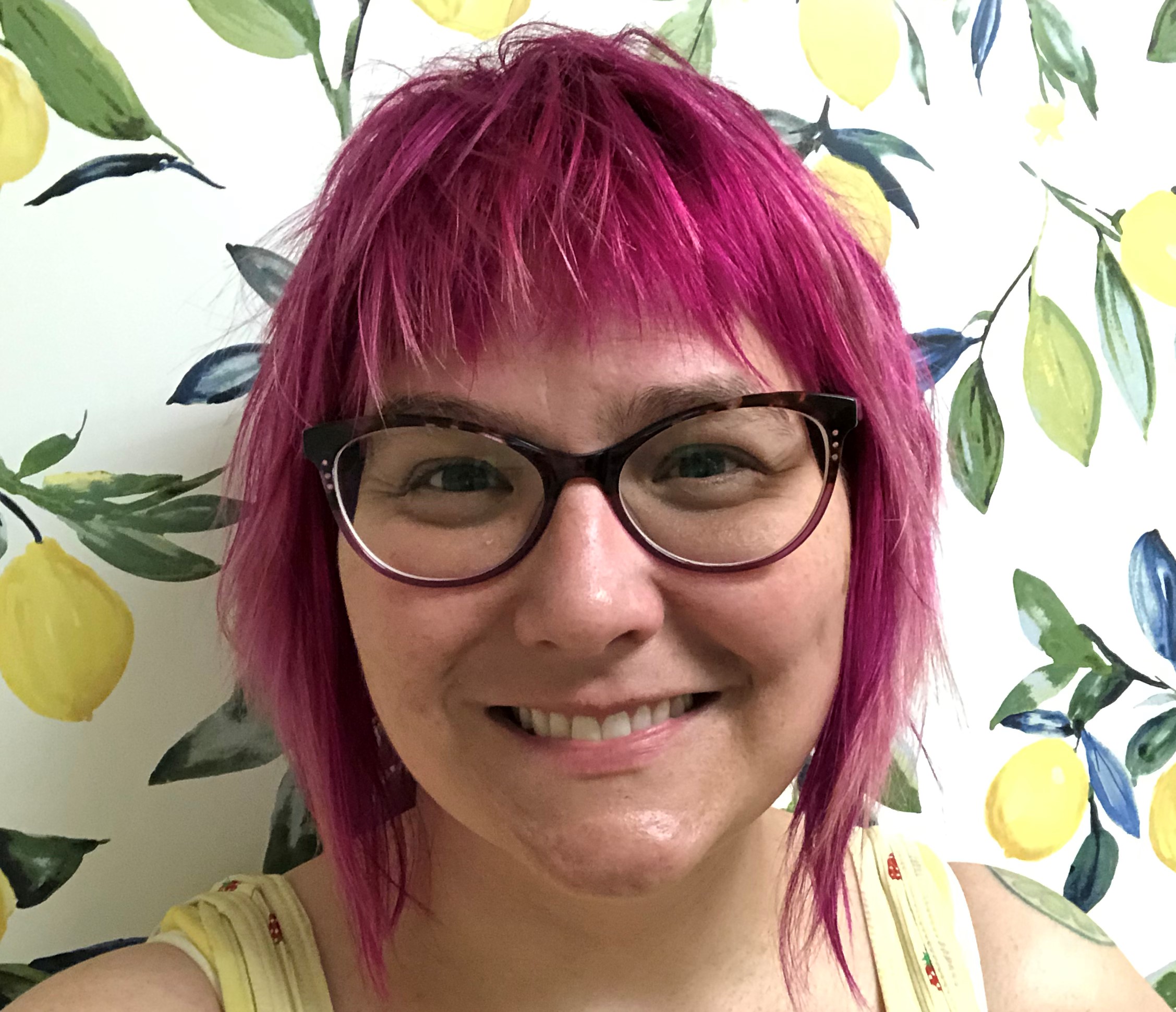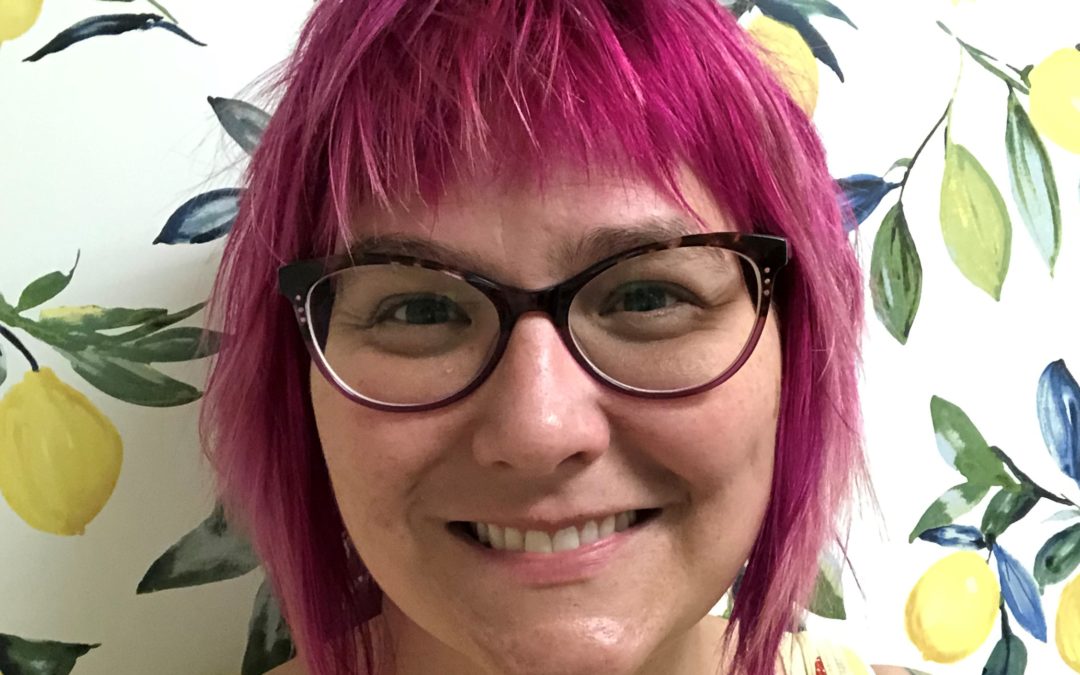I got into social work because I felt like no one took me seriously as an adolescent, and I wanted to be an adult who supported young folks. ~Lindsay Hyland, Outside In Housing Manager
We have a new Housing Manager for our transitional housing program here at Outside In. Lindsay Hyland joined our team in 2016 as a Housing Case Manager, empowering and supporting youth clients as they work towards achieving their goals. This past spring, Lindsay accepted the Housing Manager position and is now leading the agency’s housing program and working with the housing team to provide youth-centered and trauma informed care to youth living in our onsite housing program.
We’re excited to introduce you to Lindsay and share more about our transitional housing program!

What drew you to work at Outside In?
I got into social work because I felt like no one took me seriously as an adolescent, and I wanted to be an adult who supported young folks. Outside In’s reputation had reached me before I even lived in Portland, so when I moved here in 2012, I checked the website periodically for job opportunities. I was thrilled when there was an opening that lined up with a time that I was job searching in 2016!
Why is transitional housing so important?
Transitional housing offers both more autonomy and more support than shelters. Most shelters are only available at night, leaving their guests to carry around their belongings all day while they try to find a meal or apply for jobs. Guests have to arrive in a certain time window to check in, and have to leave at a strict time in the morning. Transitional housing gives folks a consistent place to sleep, shower, and do laundry – pretty essential components for anyone trying to get an education, hold down a job, or even just cope with mental health struggles. Transitional housing gives people 24-hour access to their sleeping space, a place to store their belongings, and a place to prepare food, which allows folks to spend more time in their day actively working on their goals. We think of it like a “practice apartment.” The stability of the environment gives young people a chance to build a functional routine, so that when they move into a place where they’re paying rent, they have a stronger foundation for maintaining their new home.
What makes our onsite transitional housing program unique?
Transitional housing can look like a lot of different things, but here are some aspects of ours that I’m really proud of. First, all of our residents have a bedroom. It’s so hard to find privacy when living in homeless systems or couch surfing, and even lots of housing programs are quite barracks-like. Our residents get to truly take time to themselves when they need it. Can you imagine if you never had a door to shut? If you never got to lie in bed and cry when you need to, or read a book without people walking through your space? This is so essential if we expect people to be able to focus on their educational and employment goals. We also don’t require sobriety to live here. We don’t allow substances on site, but residents are not required to be abstinent or submit to drug screening. Instead, we have multiple resources for folks who use substances to do so as safely as possible, and our drug and alcohol counselors support youths’ decisions about their use, including accessing recovery if/when they want to. This model is shown to be much more effective than refusing housing to people who are coping with addiction.
How long can a client stay in onsite transitional housing? And what are their options after they leave?
Residents can stay in our program for up to two years, but we like to have a permanent housing plan more or less figured out by their one-year mark. Our case managers work diligently to get youth on every possible wait list for fully subsidized housing, and sometimes their opportunity comes within two years! Some youth move into apartments with friends; occasionally they reunite with family; and others move into their own apartments with short-term rental assistance, where OI pays their move-in costs and then tapers down financial support as the youth ramps up to paying their full rent.
What is your favorite thing about your work?
My favorite thing is definitely my coworkers. I have never worked with such a dynamic, clever group of people. If the resources we have don’t exactly fit a client’s needs, people are always willing to figure out what we can do to improve access, or how we can use what we have in creative ways.
What are you most excited about in your new role?
I’m excited that we now have two supervisors in the Transitional Living Program. Dividing up the duties between two positions should really help us offer more consistent support to our staff and our residents. Gregory, our new Housing Supervisor, and I make a great team. It’s a brand-new system for this program, but I always feel energized when Gregory and I put our heads together about what’s possible.
Tell us something we may not know about you.
I’m allergic to turtles.
How do youth get connected with our housing program?
First, participants need to be screened into the Homeless Youth Continuum by calling 503-432-3986. From there, they can access the Day Programs at Outside In, as well as at our continuum partners, New Avenues for Youth and NAYA Family Center. Youth can ask any of the staff at OI’s Day Program (or any program they may be connected to) about transitional housing, and from there I’ll get in touch with them to do an orientation. We fill out their application together, and then they’re on the wait list!
Thank you, Lindsay! We are so grateful to have you on our team!!!
———————————————————————————————————————
As a nonprofit organization, Outside In is incredibly grateful for our community and all of their support! Our onsite housing program is staffed 24 hours each day, 365 days a year, as it’s critical that youth residents always have the support of a caring adult no matter what time of day (or night!). Your contribution to Outside In’s housing program enables our staff team to build trusting relationships with youth and support them as they work towards their educational goals, apply for employment, improve their health and wellbeing, and transition into safe, stable housing.
Thank you!
It is because of you – our community –
that Outside In is able to save the lives of thousands of people each year.
We would love to hear from you!
Please feel free to share your thoughts, ideas, and questions with us.
We are grateful for your support!
Your support of Outside In creates health and hope for the more than 11,000 people we serve every year. We can’t say it enough: THANK YOU!

